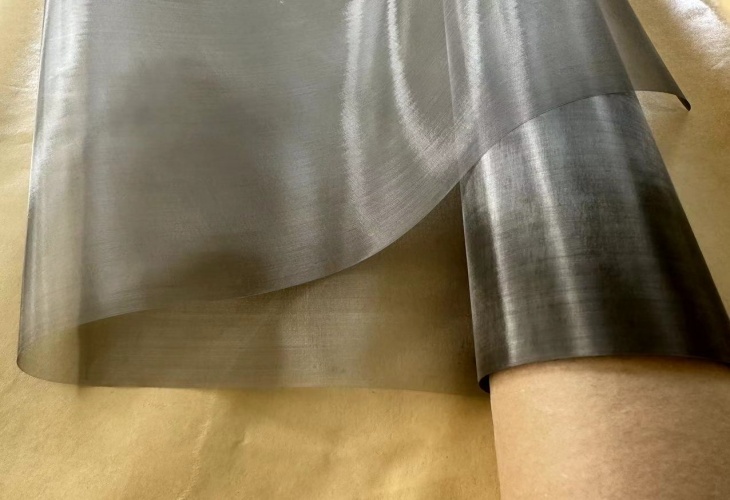Materials:
Common materials include 304, 316, 304L, 316L, 321, 310S, 314, copper, nickel, aluminum and etc. Stainless steel blackened mesh made of different materials has different corrosion resistance, strength and other properties, which can be selected according to specific usage environments and requirements
Number of opening size:
Mesh size refers to the number of mesh holes per inch of length. Common mesh sizes include 16-325 mesh, such as 50 mesh, 100 mesh, 165 mesh, 250 mesh, etc. The larger the mesh size, the smaller the mesh size, and the better the shielding effect, but the light transmittance may decrease.
Wire diameter:
The wire diameter is usually between 0.025mm-0.050mm. A finer wire diameter can make the mesh finer and improve the shielding effect, but at the same time, it can also reduce the strength of the mesh; Thicker wire diameter results in higher mesh strength, but may affect light transmittance and flexibility
Aperture sizes:
The aperture size is related to the mesh size, with larger mesh sizes resulting in smaller apertures. The common aperture range is between 0.053mm-1.54mm
Weaving methods:
There are mainly plain weave, twill weave, etc. The shielding mesh structure of plain weave is stable, the mesh size is uniform, and the low-frequency electromagnetic shielding effect is good; The diagonal woven shielding mesh has better flexibility and elasticity, and may have better shielding effect at high frequencies
Roll width and roll length
The standard width is generally 1m or 48 inches, and the standard roll length is generally 30m or 100 feet, but other sizes can also be customized according to customer’s needs.
Weight:
The weight of different specifications of stainless steel blackened mesh varies. For example, a 100 mesh, 0.03mm wire diameter stainless steel blackened mesh weighs about 0.045kg/m ², while a 160 mesh, 0.03mm wire diameter stainless steel blackened mesh weighs about 0.072kg/m ²
Light transmittance:
For applications with light transmission requirements, such as 100 mesh with a light transmission coefficient of 60 and 250 mesh with a light transmission coefficient of 40, the level of light transmission depends on parameters such as mesh size and wire diameter. For applications with light transmission requirements, it is necessary to choose a stainless steel blackened mesh with appropriate light transmission rate.
Shielding effectiveness:
The shielding effectiveness of some blackening meshes can reach 70dB, which is related to various factors such as material, weaving method, mesh size, and wire diameter. Suitable products can be selected according to specific electromagnetic shielding requirements.
Any more detailed sizes of the material and mesh sizes needed, please contact our technician team: sandy@aegismetals.net






